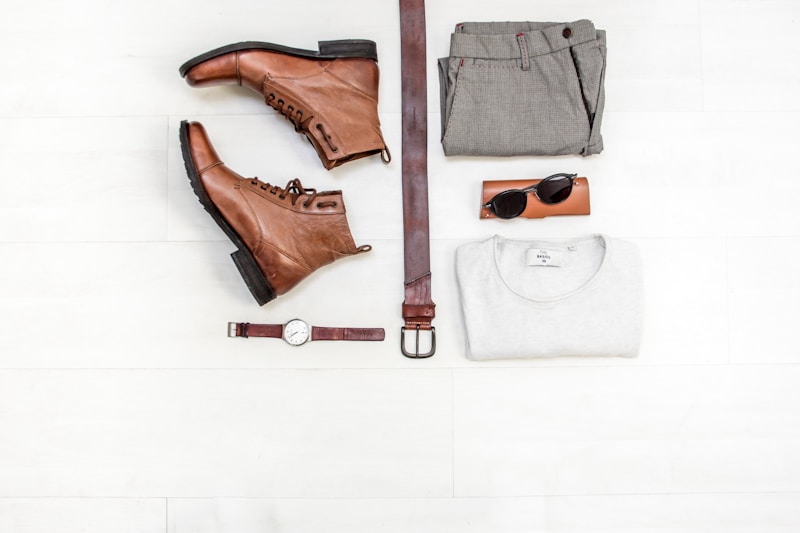Mastering the Art of Budgeting for Accessories and Alterations: Your Comprehensive Guide
Understanding Budgeting for Accessories and Alterations
Whether you're preparing for a wedding, a prom, or simply wish to update your wardrobe, budgeting for accessories and alterations can be a daunting task. This guide will help you navigate the costs associated with enhancing your clothing and ensure you stay within your financial means while looking your best.
Why Budgeting for Accessories and Alterations is Crucial
Many people overlook the importance of budgeting for accessories and alterations when planning their outfits. This can lead to unexpected costs that may derail your overall financial plan. Being proactive about these expenses can help you maintain a stylish appearance without breaking the bank. Here’s why you should consider budgeting carefully:
- Financial Control: Knowing how much you can spend on accessories and alterations prevents overspending.
- Planning Ahead: By understanding potential costs, you can plan your shopping trips more effectively.
- Enhanced Quality: Budgeting allows you to invest in high-quality items that may require alterations, enhancing fit and longevity.
Identifying Your Needs
Before diving into budgeting, it’s essential to assess your specific needs regarding accessories and alterations. Start by examining your wardrobe and determining what items are lacking or in need of modification. Here’s a simple approach to guide you:
| Step | Action |
| 1 | Review existing clothing for fit and style. |
| 2 | Identify needed accessories (e.g., belts, bags, jewelry). |
| 3 | List potential alteration needs (hem, waist, etc.). |
| 4 | Estimate costs for new items and alterations. |
Setting a Budget
Now that you’ve identified your needs, it’s time to set a budget. Consider these factors:
- Income: Assess your monthly income to determine how much you can allocate for accessories and alterations.
- Priority Items: Assign a higher budget to essential or frequent-use accessories and alterations.
- Quality vs. Quantity: Focus on investing in fewer, high-quality items rather than many inexpensive ones that may not last.
Researching Costs
Understanding the price range for accessories and alterations is critical for effective budgeting. Here’s a breakdown of the types of items and their average costs:
| Item | Average Cost |
| Simple Accessories (belts, scarves) | $10-$50 |
| Jewelry (necklaces, earrings) | $20-$200 |
| Alteration (hem, waist adjustments) | $15-$100 |
| Tailoring for complex alterations | $50-$200 |
It's worth noting that prices can vary widely depending on the brand and location. For example, high-end stores or designer labels might have significantly higher prices than local boutiques or thrift shops.
Finding the Right Accessories
Once you’ve determined your budget, it’s time to find the right accessories. Here are some tips:
- Sales and Discounts: Always keep an eye on sales events, holiday discounts, or outlet store clearances.
- Online Shopping: Utilize online platforms for broader selections and competitive prices.
- Second-Hand Options: Consider thrift stores or online marketplaces for pre-loved items that are still in great condition.
Planning for Alterations
Alterations are often necessary for achieving a perfect fit. Here are steps to ensure you're prepared for this expense:
- Consultation: Visit a tailor for an assessment to understand what alterations are necessary.
- Get Quotes: Always ask for a price quote before proceeding with any alterations.
- Timing: Schedule alterations well in advance of any events to avoid last-minute rush fees.
Tracking Your Budget
Keeping track of your spending is essential for staying on budget. Consider these strategies:
- Spreadsheet: Use a spreadsheet to log expenses and budget allocations.
- Apps: Utilize budgeting apps that provide insights into spending patterns.
- Monthly Reviews: Review your budget monthly to see where adjustments may be needed.
Tips for Successful Budgeting
When it comes to budgeting for accessories and alterations, here are some additional tips to keep in mind:
- Flexibility: Remain flexible to adapt your budget based on unexpected expenses.
- Prioritize Comfort: While style is important, prioritize comfort in your alterations.
- Keep It Simple: Sometimes, less is more. Choose versatile pieces that can be mixed and matched.

Conclusion: Staying Stylish on a Budget
Budgeting for accessories and alterations is a blend of planning, research, and a little creativity. By understanding your needs and setting realistic financial goals, you can significantly enhance your wardrobe without overspending. Remember, it's not about how much you spend, but how well you style what you have. By following the strategies outlined in this guide, you'll maintain your finances while enjoying the best that fashion has to offer.
As you embark on this budgeting journey, always keep your personal style and comfort in mind, ensuring that your investments reflect your identity. Happy budgeting!